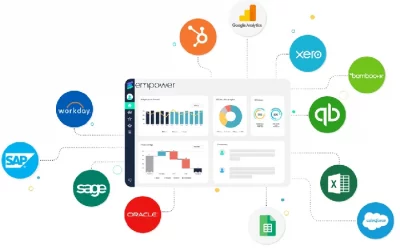FP&A
Best Practices for Capital Expenditure Forecasting: Enhancing Financial Decision-Making
Optimize your business’s long-term growth with powerful capex forecasting and scenario modelling tools.

Capital expenditure (Capex) forecasting is an often-overlooked component in financial decision-making applications. FP&A teams often manage Capex schedules offline or in “back-of-the-napkin” models and integrate back into larger cost forecasts which leaves vulnerabilities but also prevents a connected look at the business forecast.
By accurately predicting and analysing future capital investments, as part of integrated budgeting and forecasting, businesses can align their resources, assess the financial implications of different cost-cutting scenarios, and optimize their long-term growth strategies.

Simon Carey
Implementation Lead
Simon has been with Metapraxis since 2016, with half of that in the US office, spending most of his time working with clients to solve planning and forecasting challenges. In his spare time, you’ll often find Simon hiking National Parks with his camera.
FOLLOW US
Businesses need effective and powerful tools to tackle multiple tasks when it comes to capex forecasting.
- Allocating Capital: For most businesses, capital is finite and understanding where best to allocate the capital available can become a cottage industry. Effective forecasting tools that enable the modelling of scenarios quickly and easy but can also be built into the wider business model allowing fully connected planning which is the only method for understanding the true impacts of capital allocation.
- Assess Financial Viability: Capital-intensive projects can have a substantial impact on a company’s financial health. Integration of capex forecasts into cash, and balance sheet financials provides a true health check for plans. In isolated spreadsheets where treasury, FP&A and strategy are not in constant communication businesses lack the agility to utilise capital most effectively.
- Modelling the detail: More often than not, the large investments businesses need to make are not straightforward, but in fact need to be supported by complex modelling to understand the medium to long-term financial impact on all three financial statements. Purpose built solutions provide FP&A professionals the tools to model complex depreciation curves on the fly without the manual number crunching
Accurate Capex forecasting involves a systematic approach that incorporates multiple assumptions and considerations. Some of the key best practices to enhance Capex forecasting are:
- Historical Analysis: Analyse historical data to identify patterns, trends, and seasonality. Review past projects to understand their success, cost overruns, and reasons for deviations. This analysis provides valuable insights into the accuracy of previous forecasts and helps refine future projections.
- Collaborative Input: Engage all relevant stakeholders, such as department heads, project managers, and finance professionals in the forecasting process. Seek their input on upcoming initiatives, their expected timelines, and associated costs, but crucially understand how the impacts of capex initiatives can impact the wider business as a whole. For example, how will a financial digital transformation project allow not only a reduction in overall OPEX, but impact downstream financials such as an improvement in aged debtors or a reduction in accounts receivable costs.
- Market Research and Benchmarking: Explore market trends, technological advancements, regulatory changes, and competitor activities. A thorough set of benchmarking data provides the business with the information they need to make accurate and realistic forecasts, for example the impact of new technology investment can have a significant impact depending on the level of similar investment across and industry. Is investment competitive enough to keep market share growth against competitors who may also be investing in the area.
Leveraging technology and appropriate tools can significantly enhance the accuracy and efficiency of Capex forecasting and scenario modelling. Many of the functionalities and tools detailed above are complex and difficult to achieve in regular spreadsheets and that is why FP&A teams are turning increasingly to specialist applications than can deliver the complexity with the ease of use which results powerful and actionable plans or forecasts.
If you’d like to learn more about the products and tools Metapraxis offer to enable you to take your capex forecasting to the next level, please do reach out!
Latest Posts
Elevating your ERP’s Financial Planning & Analysis Capabilities
FP&A Elevating your ERP's Financial Planning & Analysis Capabilities Empower Your ERP's FP&A Capabilities with Seamless Integration. Discover how Empower enhances strategic insights and empowers finance teams, harmoniously complementing your existing...
Best Practices for Capital Expenditure Forecasting: Enhancing Financial Decision-Making
FP&A Best Practices for Capital Expenditure Forecasting: Enhancing Financial Decision-Making Optimize your business's long-term growth with powerful capex forecasting and scenario modelling tools.Capital expenditure (Capex) forecasting is an often-overlooked...
Level-up your business partnering skills
FP&A Level-up your business partnering skills Want to enhance your business partnering skills? We’ve collated these insights to help you on your journey to becoming a better business partner.Are you looking to enhance your business partnering skills? We have...




